“Normal-looking glasses” are the holy grail of augmented reality. Major tech companies like Google and Intel have joined startups like North and social media giants like Snap in trying to design something people can wear over their eyes without feeling like a total weirdo and, more importantly, without making the people around them uncomfortable. Nobody has cracked this code after almost a decade of concerted effort — but Chinese phone maker Oppo is at least having some fun with the challenge.
Earlier this year, Oppo launched the Air Glass, a glasses-based heads-up display for the company’s smartphones. Oppo has no plans to launch the Air Glass outside China, and it sells only in “limited quantities” there, where Oppo is already planning on replacing it with a next-gen version. It’s fairly expensive at 4,999 yuan (around $745), and like nearly all consumer-oriented AR devices, it’s still more a demo than a product.
But while many AR experiments focus on pushing pure technical capability, the Air Glass accepts some clear hardware limits to play with an interesting form factor. After getting a set of the glasses and a compatible phone to try out, I’ve found a design idea so obvious I’m surprised I haven’t seen it more often, executed with a roughness that makes clear how much work is left.
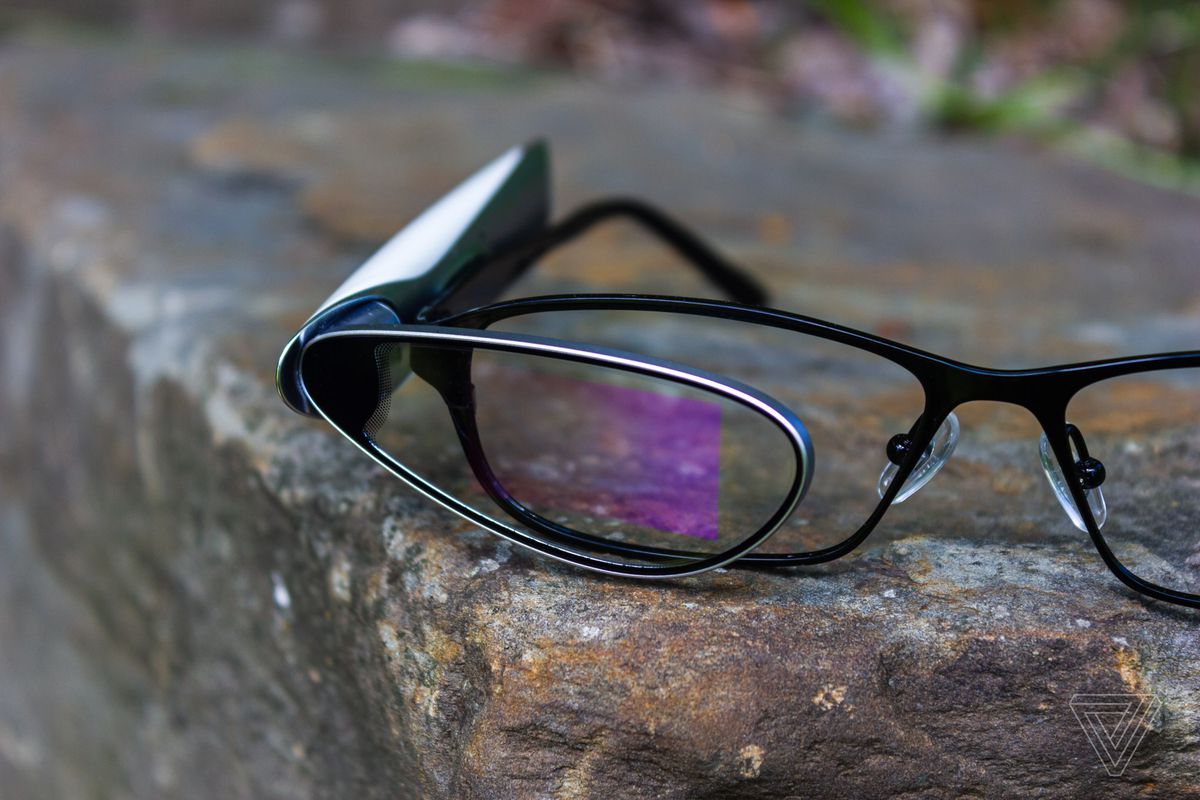
AR is a spectrum, and the Air Glass falls way on the “simple notification machine” side of it, not the realistic holograms you’ll find in products like Microsoft HoloLens. The device is a single lens equipped with a monochrome Micro LED projector and a waveguide that projects its light, plus a plastic stalk with a small speaker and a trackpad that accepts swipes, taps, and presses.
But rather than being permanently built into a pair of glasses, the Air Glass offers a two-piece design. The system described above has a shallow magnetic divot that loosely resembles an Apple MagSafe port midway along the stalk. To use it, you put on a pair of custom-designed metal glasses frames that have a matching magnetic nub on the temple. The frames are ordinary glasses but fit the lens system along the right side, and you’ve got a monocular AR display similar to Google Glass. When you’re done using the AR component, you use that magnetic divot to snap it against a curved charging case that looks a bit like a shoe horn, which in turn charges over USB-C.
When you pair the Air Glass over Bluetooth with an (again, China-only) Oppo phone, you’ll get a green heads-up display that covers a small but significant chunk of your vision — for me, about the size of my palm held a foot away from my right eye. The virtual overlay looks like something a cyborg assassin would use in the dystopian future of 1995, but in a mostly good way: it’s high-contrast, reasonably visible in everything but bright sunlight, and avoids feeling like a washed-out phone screen the way some full-color AR displays do. I kept the clock display lit continuously for nearly three hours without running out of battery, and the charging case is supposed to hold a charge closer to 10 hours, although I never managed to fully charge and then drain it in one go.
I love the theory behind Oppo’s design because it’s a strong tactic for offering lots of style options while also mitigating the perennial AR creepiness factor. Nine years ago, Google Glass put an expensive camera and projection system in front of the wearer’s eyes at all times, something that felt awkward at best and presumptuously invasive at worst — remember those no-Glass bars in San Francisco? Putting them on made you not just a person who owned an electronic device but a Google Glass wearer, to use the more polite version of the term. Companies like North have built more subtle glasses since then, but they’re still premised on the idea of having electronics on your face full-time.
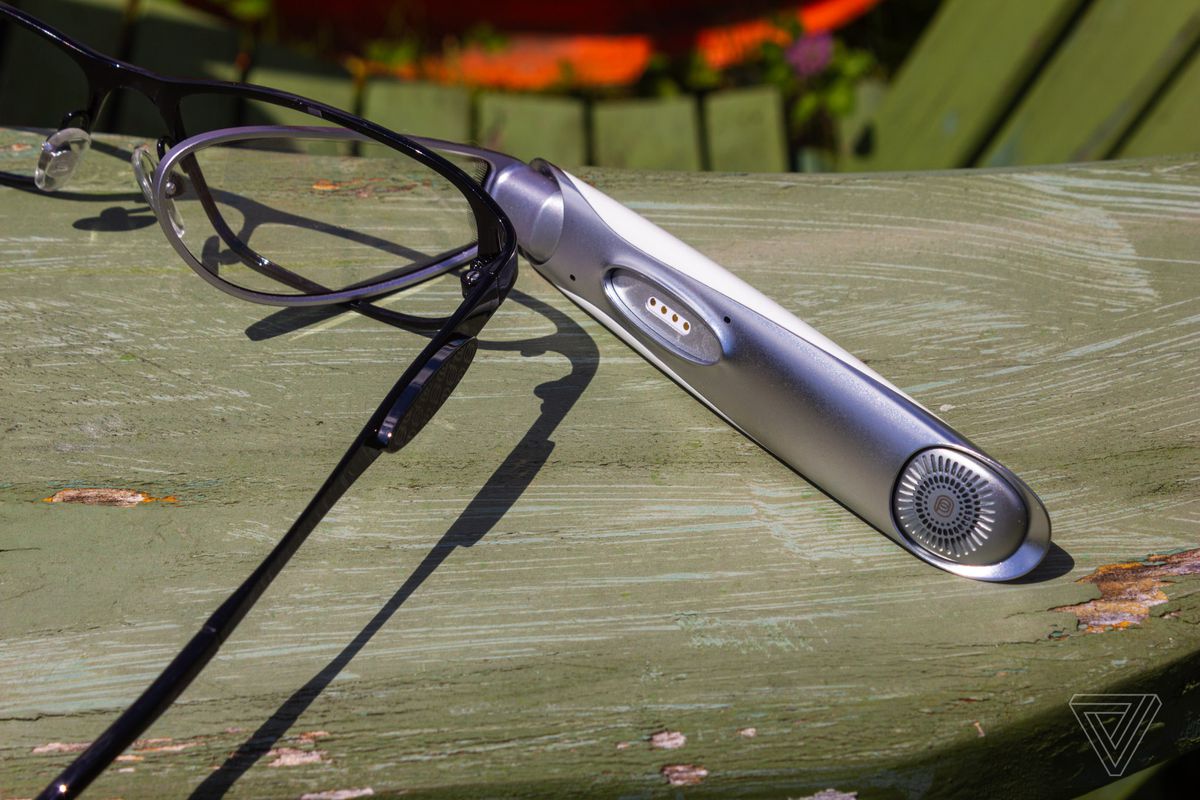
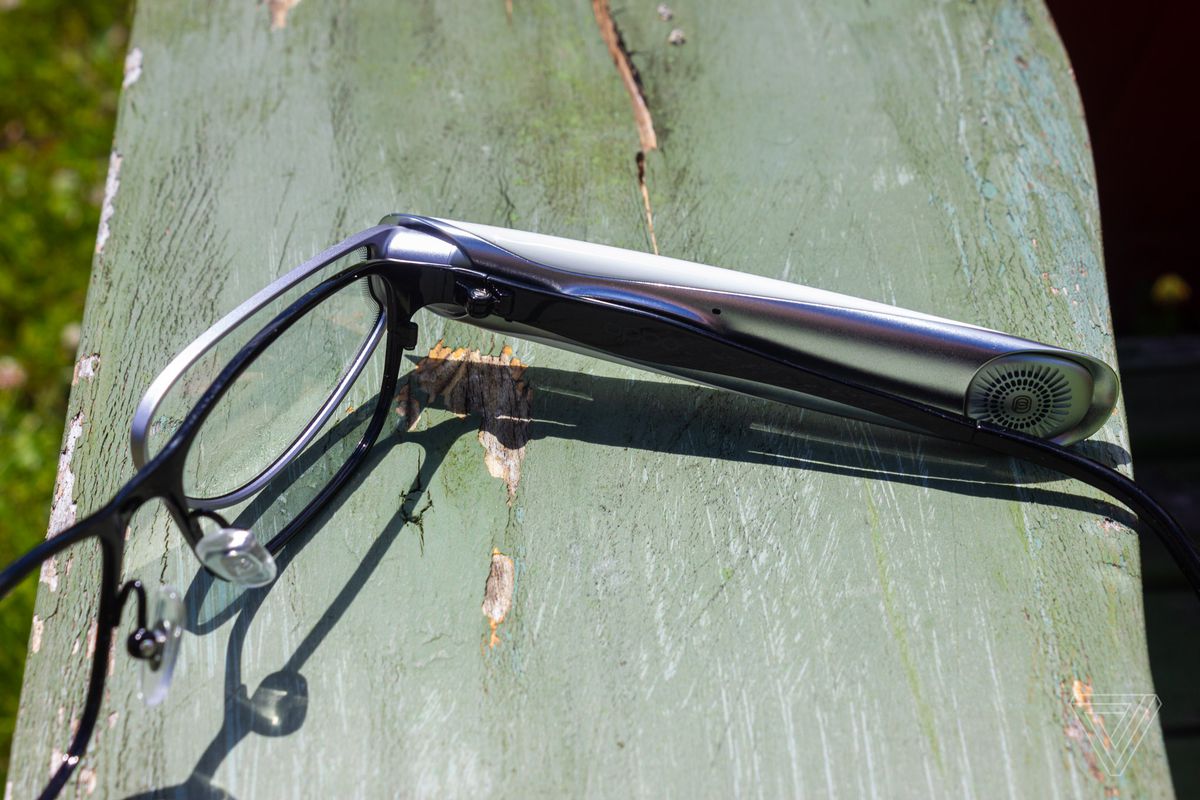
The Air Glass, by contrast, is more like an earbud for your eyes. The low-tech magnetic nubs blend right into the frames and seem like they could be easily added to a variety of styles. The magnetic hold between the 30-gram lens apparatus and the frame is quite solid, but it’s trivially easy to remove the AR portion and stick it in the case even if you wear prescription glasses full-time, making clear that you don’t have a secret screen stuck to your face. It’s a solution that takes people’s concerns about privacy and distraction seriously rather than simply trying to hide the thing they’re anxious about inside a smaller package. It also helps that this generation of Air Glass doesn’t have a camera, although Oppo says it doesn’t rule the option out for future versions.
Oppo’s AR interface focuses on simple widget-like applications in the form of “cards,” which you manage from the companion smartphone app. “Opening” a card launches it in the glasses, and you can swipe between the cards with the side trackpad or turn the glasses’ display on and off by tapping it. You can also long-press the glasses for voice commands or use gestures with an Oppo smartwatch, which I didn’t have.
At their most basic, cards display information like the time or weather. More complex cards open turn-by-turn walking directions using Baidu Maps, display near-real-time language translation, or load text files to create an AR teleprompter. Since the teleprompter effectively just displays any text you want, you can use it more creatively as well — I cooked dinner one night by writing the recipe in a Word document and using the glasses as a hands-free screen.
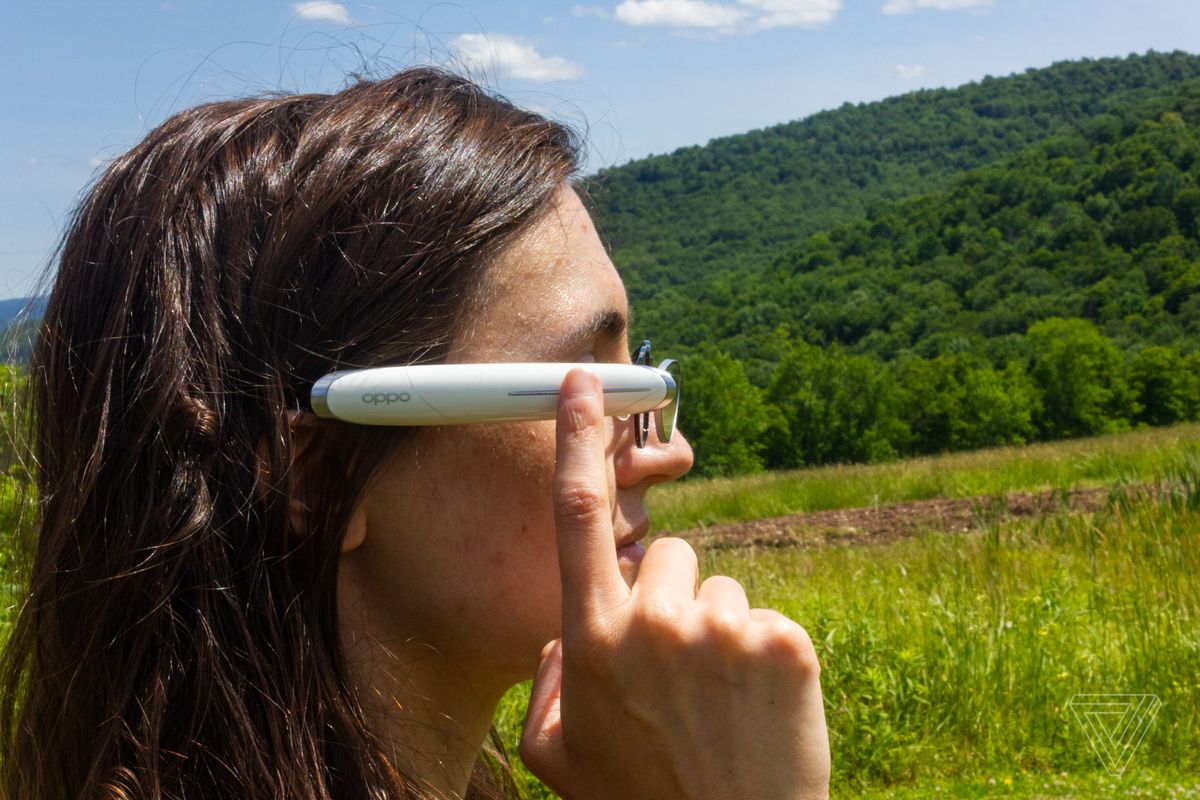
It’s a good set of features executed intuitively at a high level, but the average experience is still very rough — and for anyone who doesn’t speak Chinese, only about half-usable. Turn-by-turn navigation tools and voice commands haven’t been implemented in English, so I muddled through them with the help of Google Translate and my semi-forgotten college language studies. (Within my very limited capabilities, both seemed functional but clunky.)
Automatic translation is limited to English and Chinese, and it’s not as seamless as, say, those vaporware glasses Google asked us to imagine in May. You can hit a button to have one person speak into the paired phone with one language and see it translated into the second language’s text on the glasses, then have the glasses wearer speak and get the results similarly translated into text on the phone. There’s also an option for two sets of glasses, but I wasn’t able to try it.
Using the translation system by talking to myself in both languages, the phone side had a tendency to time out or not recognize that I’d spoken after hitting the button. It took several seconds to transcribe and then translate even short messages from either my native English or my very rusty Mandarin — which isn’t an issue unique to Oppo but is a reminder that real-time translation still has real-world limits.
Also, the fact that Oppo’s non-AR frames are quite normal (albeit sans glass for me, which made me look like an insufferable hipster wearing them in public) doesn’t make the total package any less ridiculous-looking. The glasses’ lens-over-lens design looks uniquely silly, especially because the frame and the waveguide are completely different shapes despite Oppo designing them to work together. From specific angles, the glasses will clearly and brightly display whatever is on your screen to the outside world, heightening their retro-sci-fi vibe. The design is barely heavier than wearing a pair of big sunglasses, but it does tilt to one side — not enough to bother me as a wearer, but enough to be noticeable from the outside. It’s intuitive to imagine glasses designers building compatible magnetic nubs onto different styles of frames, but it’s not clear whether the lens would perform equally well on top of various shapes and sizes.
And worse than any of that, I had persistent, if minor, comfort problems with the optics. In my first few hours with the glasses, I became slightly motion-sick and developed a headache within minutes of putting them on. The discomfort seemed to get better over time, but my eyes still feel strained after wearing them.

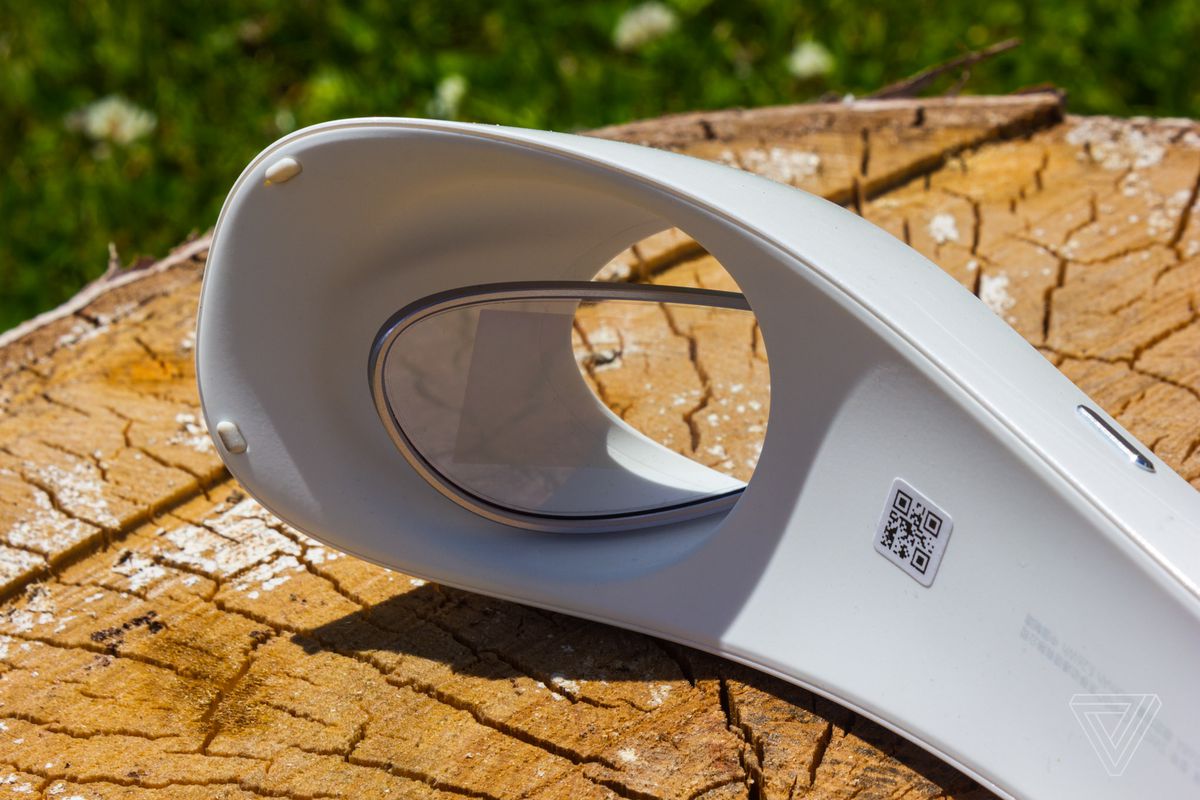
I asked Oppo about the problem, and spokesperson Krithika Bollamma noted that monocular displays like Air Glass and Google Glass can cause headaches for some buyers. Over email, AR optics expert and KGOnTech writer Karl Guttag concurred that the single lens — with a focal distance effectively focused at infinity — could be the culprit. “You may be getting a conflict between one eye focused at infinity and the other eye focused on the real world,” Guttag said, suggesting that I could confirm it by trying to keep my other eye focused on the distance.
This tracks with my informal experience, where performing close-range tasks like cooking or looking at a monitor tends to trigger sickness while walking around with turn-by-turn directions doesn’t. (On the other hand, I’ve used Google Glass in similar ways without any discomfort.) Guttag also suggested that the Micro LED’s flicker might cause sickness for some people, although he said I’d have likely noticed a problem with the HoloLens 2 as well, something that hasn’t been an issue in the past.
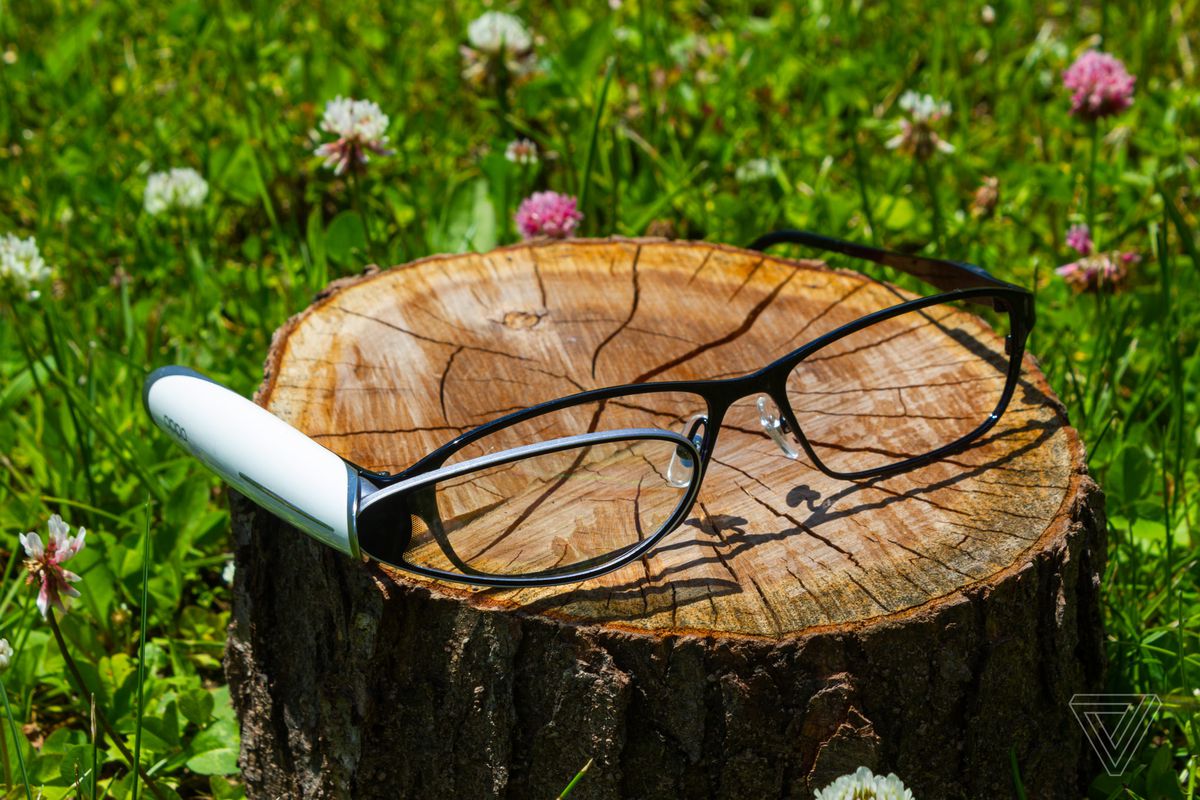
I’m not sure how widespread my reaction is; my husband wore the Air Glass eyepiece for around 15 minutes, a period long enough to give me a headache, without incident. I’m not really even sure what’s causing it since I’ve been fine in headsets with comparable designs. But it’s an example of the complications that AR hardware adds to computing and the kind of thing that holds AR back — a risk of physical pain being something of a dealbreaker for many tech consumers.
Oppo seems to imagine the Air Glass as one of a possible range of head-worn devices people might buy. It doesn’t replicate all the features of something like Nreal’s consumer smart glasses, which let you watch streaming video and even play Steam games. Future versions are supposed to get support for more colors, but the goal isn’t an all-in-one computing package. It’s more like the glasses equivalent of a smartwatch.
But even with all these caveats, including the fact that I’ll almost certainly never see one for sale in America, using the Air Glass is a weirdly cool experience. It’s a form factor that higher-profile players like Apple and Meta don’t seem to be seriously exploring, addressing some of my biggest concerns with AR as a platform. And while the entire field of consumer glasses is one big experiment, there’s plenty of room to get weird.